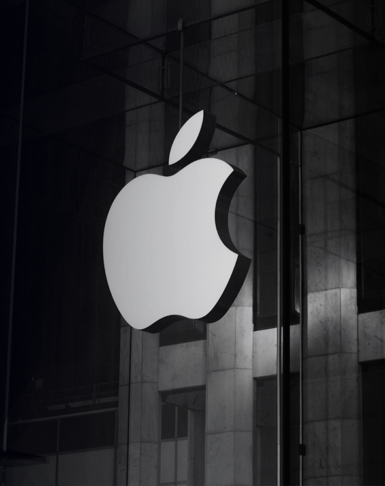SMPL Q&A is a new blog feature, in which we interview our experts on all things relevant in branding, design and simplicity. Here we talk about the current trends in brand naming, how simplicity relates to the notion of naming a product, brand or service, and how a company or brand can consider purchasing naming services.
What are some of the current trends in naming?
Right now, “verb-ability” is something we’re constantly hearing brands request. This means that a name should be able to be used in conversation as a verb, thereby (theoretically) increasing the likelihood that a potential user will actually go ahead and take action. What’s often misunderstood about this idea however, is why exactly the public deems certain names worthy of becoming verbs where others totally fall flat. Blatant attempts at “verb-ability” are really easy to spot these days. We’re surrounded by names like Spotify, Storify, Adify, Mobify, and Appify you get the idea. Some kind of work, some are completely laughable – to me, many of these names come across as “verb-able duct tape.”
So, what’s really going on here? We like to say a name is the first word of a brand story, but it’s not the whole story. In other words, a great name starts a conversation with the world but it can’t necessarily finish it. That’s where the actual product experience needs to take over.
If we take a look at some of the most successfully verb-able brands out there today (Uber, Google, Instagram, Facebook, Venmo, etc.), we see that they have a couple of things in common. First, these products offer users an experience that is useful and unique – that’s absolutely vital. Secondly, their names create intrigue while helping users clearly understand something important about the brand experience…but again, they don’t try to say everything.
What’s also interesting here is that none of these “verb-able” brands are actually verbs, and with the right name and experience this makes absolutely no difference—the name becomes a verb when the experience truly warrants it. Why wait for a cab, when you can “Uber it?” I’m too lazy to call, just “Seamless some food.” Don’t take out money, just “Venmo me.” Bottom line, brands become everyday verbs, when there’s an everyday use for them, and while a name can encourage that, it can’t be forced.
Does simplicity apply to any current trends in naming?
The idea that a brand should be “simple and human” is another trend that comes up quite a bit these days—and it’s especially relevant for Siegel+Gale. As human beings we all feel like we’re familiar with how “humanity” looks and sounds, but when it comes to brand names it can be a little more complicated to pin down. I think the challenge of “show me don’t tell me” really comes into play here.
If a company is trying to express a specific attribute—“trust,” for example—the initial instinct many times, is to use the word itself in the name. This strategy will likely fall short every time. People don’t like to be told what to do, especially from a brand. As a consumer, when a brand tells me to trust them, in reality I’m more likely to have the polar opposite reaction.
Anyone who’s seen a science fiction movie already understands this concept. The human who has to tell you they’re human is totally an android.
What is the “naming spectrum?”
The “naming spectrum” helps classify name types from both a legal and creative standpoint. It consists of five naming types, ranging from the most “generic” (or least unique name concepts) to the most distinctive (or most unique name concepts).
A few examples of each:
Generic – Names that are words used in everyday language – basically, they are very plainly, what they are. Example: Cars, Hotels, Milk, etc.
Descriptive – Names that may tell a slightly deeper story than generic words but still literally describe a company, product or service. Example: BestBuy, FlatRate, Toys R’ Us.
Suggestive – Names that evoke a characteristic or underlying quality, often in a metaphorical sense rather than something literal. Example: Amazon, Twitter, Seamless.
Arbitrary – Names that are real words, but used out of their expected context. Example: Camel (Cigarettes), Shell (Oil), Apple (Computers).
Fanciful – Names that are completely invented or “coined”. They can easily take on as little or as much meaning as needed, since they are not words that already exist (and therefore, carry their own meaning) in everyday language. Example: Kodak, Xerox, Oreo.
What “formats” need to be considered when developing a new name?
From a legal standpoint, it’s important to consider whether or not you’ll need to trademark your name. Generally speaking, the more distinctive the name (suggestive, arbitrary, fanciful) the easier it will be to protect with a trademark – fanciful names being the easiest. Generic names are never trademark-able, and some descriptive names may be very difficult to trademark.
From a strategic standpoint, although more distinctive names are comparatively harder to market than descriptive names, new companies are much more likely to successfully distinguish themselves with names that are suggestive, arbitrary or fanciful. When done correctly, these names are not only easier to obtain, but also help to create a deeper, richer impression in the consumer’s mind. If a company wishes to expand or change its business model in the future, fanciful names can be especially useful because they can take on any meaning that the brand desires.
With a lot of focus on clearing IP and making sure a name can live on its own, what is some advice you can offer to a company or brand that is looking for naming services?
In addition to the legal and strategic ramifications related to name “type”, from a creative standpoint, brands need to be unafraid of being different. As a general rule, the most expected names—names that instantly feel right and familiar—are not only most likely to be taken already, they’re unlikely to make a significant impact in a saturated market. In other words, these comfortable names are often the least effective.
If we think of some of today’s most imaginative brand names (Amazon, Uber, Twitter), we can easily imagine them being shot down in your average boardroom if they were suggested—but their success is now indisputable. Rather than attempting to explain everything about these brands, the names are able to start a totally new conversation because they’re completely unique within the context they’re used, and offer a poignant first word in their brands’ stories.
Sometimes names are especially intriguing because they don’t tell the whole story, but rather offer just the right information to hook an audience. There’s a bit of seduction to it – reveal too much and I’m no longer interested, reveal too little and I’m just confused, but if you give me just enough for me to want to dig deeper, then you’ve got me. This is a principle that extends well beyond naming—it can be applied to nearly anything creative.


